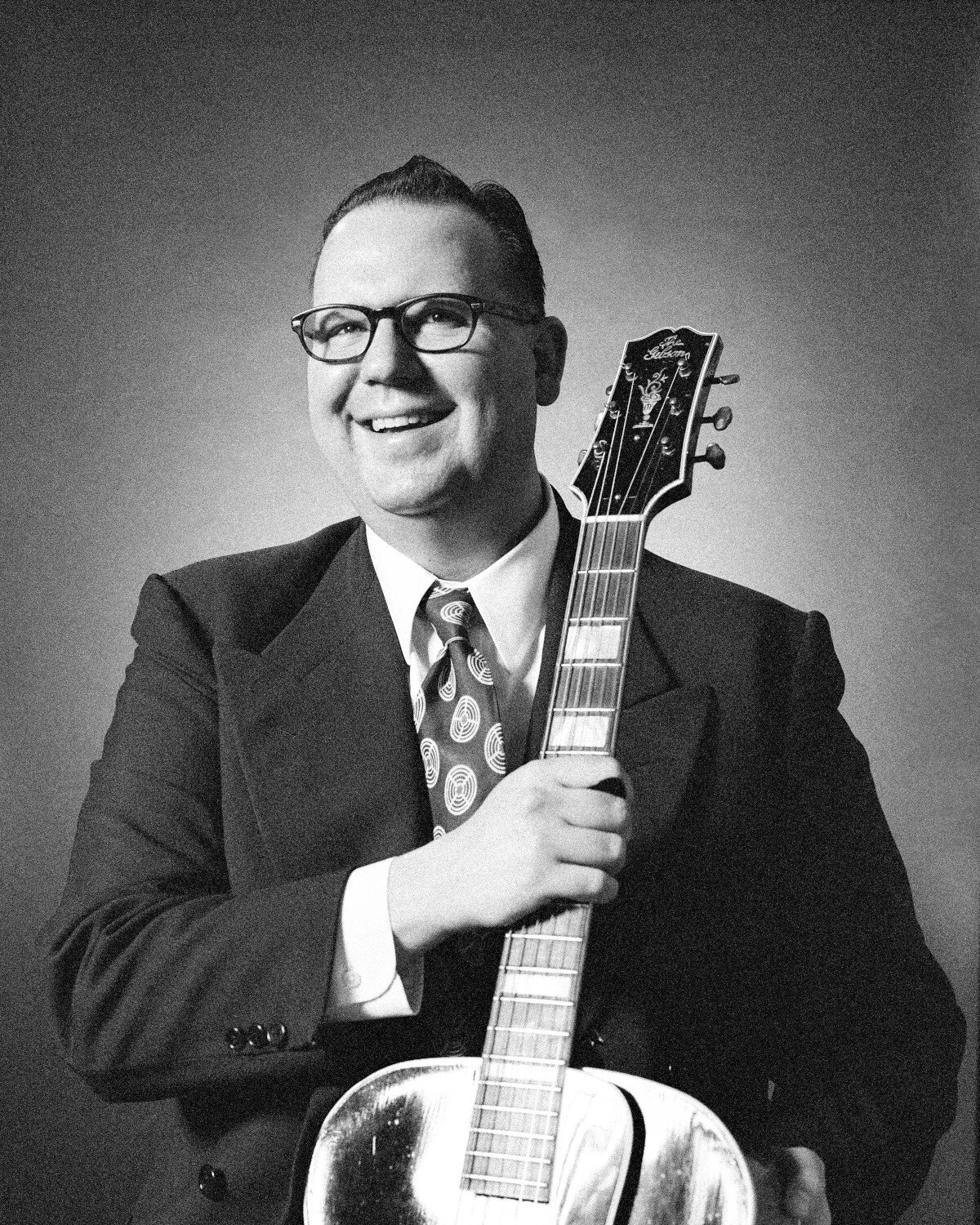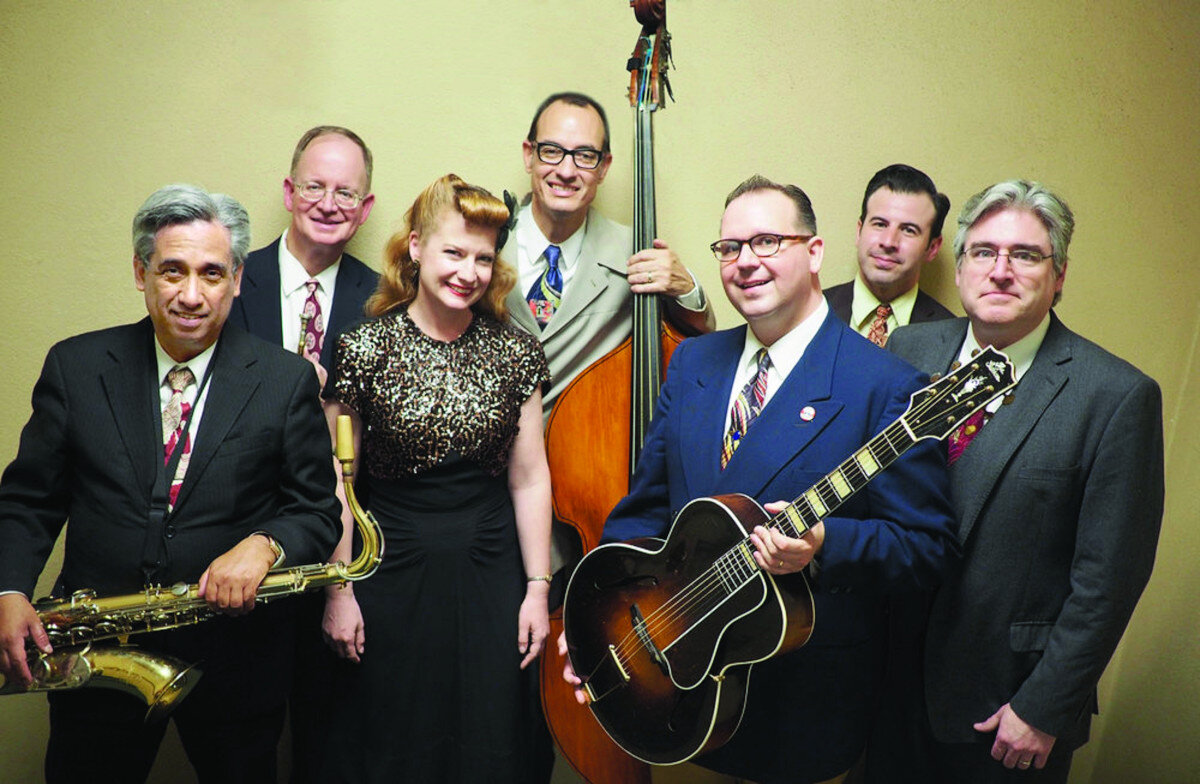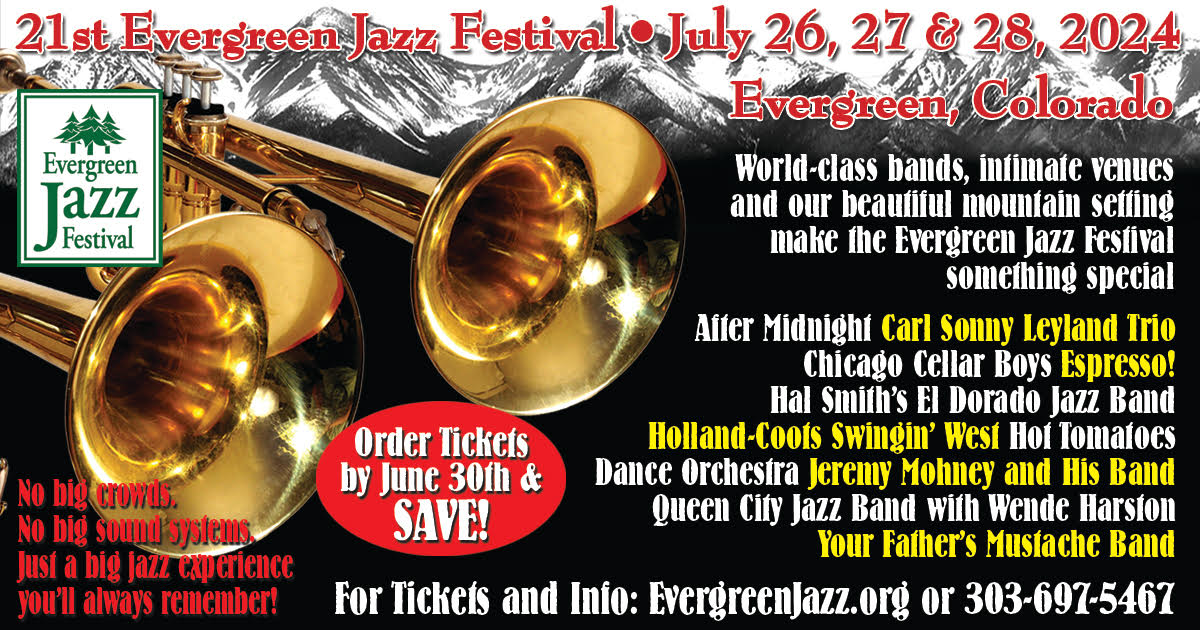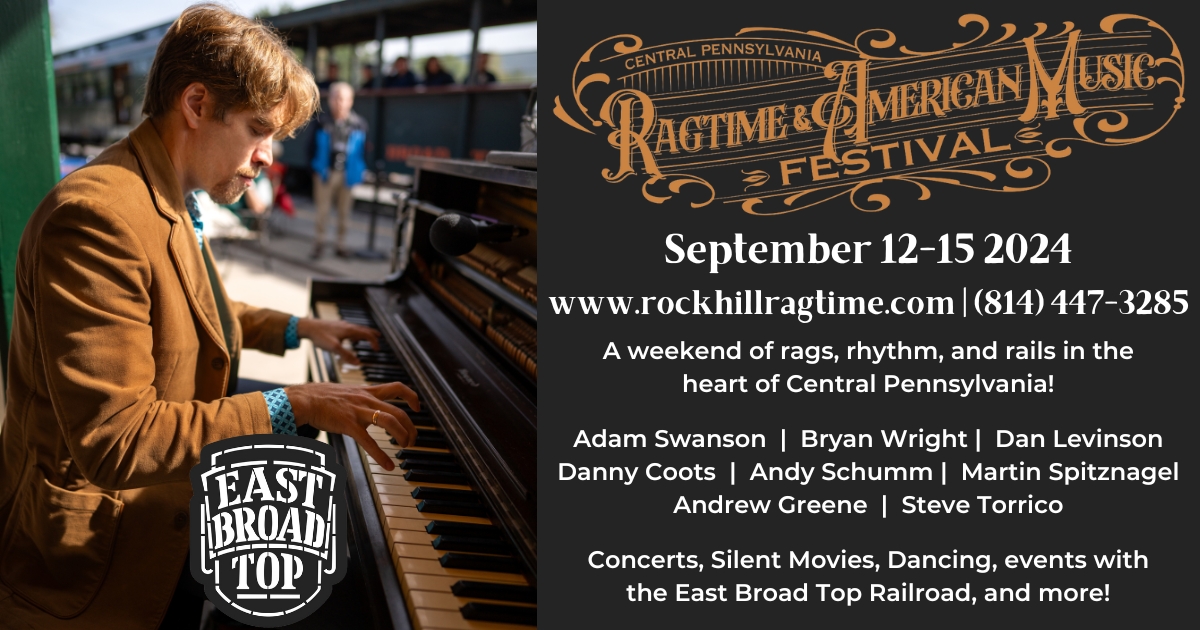What is authentic swing music? It depends who you ask. Plenty of modern outfits advertise themselves as “authentic” swing musicians—many of them function bands, sporting velvet-trimmed, pastel drape jackets in their glossy promo shots.
Jonathan Stout disagrees. The self-confessed “giant nerd” for jazz saw many such bands during the neo-swing revival, and set out to create something which honored his idols much more faithfully. But then other influences crept in and the guitarist—whose outfits now include his Close Shave Quartet, Campus Five, Grand Slam Sextet, Rugcutters, and Rhythm Busters—regularly plays the world’s biggest events, to some of its most appreciative audiences: dancers. Because although a Stout record makes a nice listen, this is music conceived, crafted, and fine tuned for moving to.
“I started swing dancing as a high school student in 1995, the beginning of the revival,” said Jonathan, a lawyer by day who lives in Los Angeles, CA, with his wife and four-year-old son (who is named for two of his heroes: Charlie Christian and Freddie Green). “My Spanish teacher gave us some lessons. I was an awkward teen playing metal, and it just wasn’t working with the ladies. So I said okay, I’ll try this.” Soon the after-school club wasn’t enough, and Jonathan went looking for more specialized tuition.
But the first classes he found were teaching “the Arthur Murray stuff”—ballroom-style swing dancing for the masses—not the stuff of the Savoy, or the Rendezvous Ballroom.
“Being a bit of an alt-rock teen, I had this idea that there’s the real thing and then the corporate BS,” said Jonathan. “Eventually I found people like Peter Loggins, who were going back over the old footage and saying, ‘Hey, this isn’t what they were doing back then.’”
Rediscovering the supposedly-lost styles of Dean Collins, Jewel McGowan, Jean Veloz, Hal Takier, and Ann Mills, Jonathan became a disciple of the old school. At college, he was dancing seven nights a week. “I got into that scene, steeping myself in the music—vintage clothes all day every day,” he said.

Up until this point, Jonathan’s main musical interest had been “the Blue Note sound—Giant Steps and all that.” He began a double major in history and jazz guitar, but the experience put him right off playing. “It really ruined the guitar for me,” he said. “It was a course for serious professionals.”
Soon afterwards he saw Sweet and Lowdown, Woody Allen’s 1999 comedy about a fictional swing guitarist, Emmet Ray (with guitar by Howard Alden), who idolizes Django Reinhardt. “I thought, ‘Oh, maybe I should try playing this stuff on guitar instead.’ So I tried copying Django [Reinhardt] and it was so much better than that bebop stuff I’d been playing,” said Jonathan.
His uncle, a professional trombonist, arranged guitar lessons with John Reynolds, of Dean Mora’s Modern Rhythmists. “It was so inspiring,” said Jonathan. “He was sort of a mad genius. He watched me and eventually said, ‘Yeah, okay, you’ve more-or-less got it.’ So then I was playing swing guitar in my bedroom, learning Charlie Christian transcriptions.”
Even before social media, Jonathan found online a goldmine of vintage jazz guitar. “There was a website with audio samples of Allan Reuss, Carl Kress, Tony Mottola, Carmen Mastren, Barney Kessel, Irving Ashby,” he said. “You couldn’t buy these guys’ CDs because they were sidemen. So I downloaded all this stuff and was practicing it, as well as swing dancing all the time.”
But while this old material scratched the authenticity itch of a “giant nerd” and former rocker, Jonathan didn’t get the same satisfaction from what he heard on the dance floor. “When we went dancing, we often put up with the band until the DJ came out,” he explained. “Because they were straight-ahead jazz musicians, playing take ‘Take the A Train’ like it was ’fifties Miles Davis—just because you play the melody doesn’t mean you’re playing swing. The rhythm and the phrasing just wasn’t right.” He also felt “a lot of condescension” from some jazz pros towards the “primitive” trad and swing that dancers wanted to hear.
The push to make his own music came from a technical hiccup at one dance event. “I had a friend, Josh Collazo, who was drumming with some of the best bands back then,” said Jonathan. “We just happened to be at some dance together where the PA system broke. He had a snare drum and I had an acoustic guitar and we just jammed together.”
The impromptu gig went down well. “One day Josh called me and asked if I wanted to sub for John Reynolds in his new band, the Feetwarmers,” said Jonathan. “I learned more about guitar in the next six months than I had in five years, because doing it with people is very different to doing it by yourself.”
Together, the dance-mad musicians set out to beat established jazz bands at their own game.
“We were also reacting to the neo-swing thing—the guys who were a hodgepodge of ’thirties slang, ’forties film noir, and ’fifties clothes,” said Jonathan. “When a band does a swing night, unless they’re in our swing world, it’s never quite right.”
Besides lacking the right groove, bands made up of bebop players had a tendency to go too fast for too long. “There’s just an insincerity in a straight-ahead jazz band saying, ‘It’s a swing gig? We’ll play “Sing, Sing, Sing”’—even Benny Goodman got sick of that song,” he added. “We knew there was a cadre of people who wanted something more authentic.”
But as he dug out the deep cuts and honed his swing style, Jonathan discovered that authentic doesn’t always equal danceable. “I’ve since discovered that there’s a myth to authenticity,” he said. “Most of what DJs play is taken from 78s, which were limited to just over three minutes a side. But bands did play songs of five minutes or more. And while DJs cherry pick songs of the right tempo, if you listen to old broadcasts that’s not all the bands played.”
And so a new mission began to take shape: providing live music which honored the musicians and dancers of the Swing Era, while keeping things as dance-friendly as possible. Jonathan’s calling needed its own vehicle. “I didn’t think I’d be able to make a band as good as Josh’s,” he said, “but Hilary [Alexander]—our singer and co-bandleader—has run Camp Hollywood, one of the world’s biggest Lindy events, since 1998. She said, ‘Why don’t we start a band?’ Josh would just call people from the bands we liked and ask them to join. I said, ‘Oh, you can just do that?’ So when it came time, that’s what I did.” The result was the Campus Five, just one of Jonathan’s bands to grace dance weekenders worldwide.
They focused on the small group repertoires of Benny Goodman, Coleman Hawkins, Illinois Jacquet, and the likes. “Our first CD came out and it worked,” said Jonathan. “People would DJ it at dances because the audio was clear, the track length and tempo was on the case, the songs were concise—things sort of steamrolled from there.”
They followed up with a second disc, and within three years they were touring to European camps. “We were playing music which felt and sounded like what the DJs were playing and honored the constraints and expectations of the swing dance community,” Jonathan said. “Because while a lot of jazz musicians would see those limitations as annoying, I see them as targets to work to.”
While trad bands had long been faithful to the old styles, this was less the case in the swing scene, Jonathan says. “In our little world there weren’t other bands catering to dancers in that way. There were swing-adjacent bands, but the fact we were playing swing was an easy win. That’s why we started getting all those gigs.”
Was this selling out? Jonathan thinks not. “I’ve made peace with the fact that what our community wants is a postmodern distillation of what the Swing Era was: not the ballads, novelty numbers, waltzes, or rhumbas. Just the stuff good for Lindy, Balboa, and shag.”

The project was as much about honoring the old-timers as much as making good music. “There were still living swing dancers in California who invented Balboa,” he added. “People who were in those old movies: Freda Angela Wyckoff, Hal and Marge Takier, John and Anne Mills. The kings and queens of LA Lindy and Balboa. So there was a real connection to that living history and legacy that I wanted to preserve and get right.”
He added: “Playing for dancers is a whole new skill set. I’m fine with the ways we’ve pared away the non-core aspects of Swing Era music. That said, I think because of how DJs are, there are ways those expectations can be inhumane, if they run wild: certain tempos, going for a particular length of time, the time between songs—that all needs to be humanized. A band has to put the chart away, pick up the new one, take the horn off their lips for a minute.”
The answer was injecting some of that “giant nerd” stuff—something which has become a Stout trademark, but which started as a way to give players a breather. “I would start talking about the songs and the history between numbers, if I knew anything interesting about them,” said Jonathan. “I was just playing for time. I started doing it at [Asheville, NC’s] Lindy Focus, where people really got to honor the music, and it really worked. And now the stories of these artists has become part of what we do, especially as people are becoming much more socially aware.”
Dance contests have demanded something else again, as the spotlight format—where couples get a few bars each, before all swinging out for an “all skate” finale—has become more popular. “The couple that goes out last has to go straight into the all skate, when they’ve already been working super hard,” said Jonathan. “So I put an eight-bar drum break in one arrangement, just to let them cool off a bit. And we did that and all the couples hit the swing out at once and it just felt great. And so we still do that, fifteen years later.”
Jonathan’s repertoire also includes a growing amount of original swing. This too was born of necessity. “We were in a documentary playing ‘Jumping at the Woodside,’” said Jonathan. “Whoever controls that music wanted $30,000 for the rights. And so we got dubbed over, which was a real bummer. Another producer came along and said, ‘We need some music we don’t have to pay for.’ And so we wrote some original tunes.”
Playing big, week-long festivals with friends threw up another problem. “We had to haggle over who was playing what on which night,” the bandleader explained. “And we didn’t want to get into a contest of who plays it better, because we were all friends.” Writing and playing his own material solved that potential problem.
Of course, all Jonathan’s globetrotting work ground to a halt in 2020. He’s kept busy, releasing his All Cooped Up “quarantine EP” last May, as well as playing on releases from Michael Gamble, Keenan McKenzie, and Enric Peidro. And doing a lot of practice. “[New York trumpeter] Gordon Au said this is just an ‘unintentional sabbatical’ and that we should all just practice and make the best of it,” said Jonathan. “Early on, I just couldn’t do that. And I got resentful and self-conscious about it. But I’ve surprised myself, in the end.”
So what does he look forward to the most, now that vaccination is in full swing: playing, or dancing? “The skills I have are in serving the swing dance community through music,” he said. “That’s what I’m best at, and I don’t get the chance to dance that often.”
He added: “When I see people dance to our new CD—which will probably come before I see a big dance floor filled, when there’s enough people allowed in a room to afford to hire a band—that will be a big deal for me.”
Jonathan plans to release a live EP from his Close Shave Quartet on May 7th, 2021, and a new Campus Five album—recorded last November—the following month. Look out for them on Bandcamp.
Visit Jonathan Stout online at www.campusfive.com. Albums are available through campusfive.bandcamp.com.



























